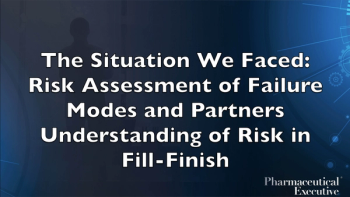
Overcome hurdles to your creativity
Spice up your sales.
This is the third in a series of three articles on creativity in selling. The first article covered the results of a study on creativity and the second article dealt with using new technology to develop creative selling ideas.
A survey on using creativity in selling (See Pharmaceutical Representative, October 1997, p. 14) revealed that many sales professionals are hiding their brains at work for five main reasons. This article outlines those hurdles to creativity and offers advice on ways to overcome them.
1. No time for ideas. Making time for creative thinking and problem-solving during a hectic workday is not easy. But if you don't, your selling skills will become stale and you will be vulnerable to competitive leapfrogging.
Managers need to schedule idea-generating sessions on a monthly or quarterly basis and they need to stick to their schedule once they make it. Meet off-site, wear casual clothes, permit and encourage humor, create goals and an agenda for the creative process and start with wacky ideas to smash inhibitions and jolt innovative thinking. Brainstorm, and then implement good ideas quickly.
If your manager won't schedule such a meeting, use the time while traveling to customer sites or waiting in the reception room to brainstorm.
2. Pain of making mistakes. Fear of negative consequences and perfectionism prevent many people from taking chances that lead to breakthroughs.
Both you and your sales organization need to change your "paradigm of mistakes."
Creativity, like selling, is a numbers game - the more ideas you come up with, the greater your probability of striking a jackpot. Experimenting with creative approaches will invariably result in setbacks, so it's vital to view mistakes as "failing forward." You are getting closer to a great idea with each course correction.
3. Uncertainty of how to apply creativity in selling. Some salespeople wonder about how to apply creativity throughout the sales process. We start sales innovation workshops by having participants ask themselves questions that will help change something they do.
For example: "What pieces from something else can I combine to create something new?" "What can I borrow (from other fields such as advertising, trade shows, etc.) to improve my strategies or make my presentations more persuasive and compelling?" "What can I eliminate from my sales activities or correspondence to make me more productive?"
By answering the question, "How might I modify something by altering its shape, size, color, graphic design or content," one of our clients created a dazzling new proposal format. His objective was to make his proposal so "inviting" that it would prompt his customers to read it in its entirety. Instead of the usual 8 1â2" x 11" vertical format, he chose an 11" x 17" horizontal format, designed a multi-colored cover and added illustrations, graphs, pictures, photos, and sidebars with key information and sales points to the proposal.
4. Adhering to a "sanctioned" sales process. Almost 20% of respondents to our survey said they had to adhere to a rigidly structured way of selling and were not permitted to deviate.
Creative selling does not replace a successful sales formula - it supplements and complements it.
Selectively use creativity to deal with situations that are resistant to even the most powerful techniques of your sales model, such as overcoming super-tough objections or getting an appointment with a certain type of doctor. Identify those selling situations where creative treatment would make your sales method even more effective that it already is.
5. Only management develops ideas. One respondent from our survey summed up what others noted, "It often appears that any creative ideas expressed have little or no merit unless they come from management." To get your management to hear and respond to your ideas, consider the following tactics.
First, ask for advice on how to make your idea better instead of rushing in and saying, "I've got a great idea! Can we do it?" The more a manager shapes and builds an idea, the more pride and ownership he or she will feel in the now "joint" idea.
Second, relate how your idea will directly and specifically help meet the goals, objectives and strategies of the manager to whom you're pitching your idea. Flesh out your idea so he or she can see the solid solution or well-thought-out plan behind it.
And third, show appreciation for your managers' ideas and warmly thank your manager for being receptive to your efforts to maximize your imagination. By employing these tactics, you can begin to recondition even hardened mindsets to accept more of your ideas.
Keep trying
Creativity needs to be welcomed in business environments - especially in sales organizations. Overcome the obstacles to developing your personal creativity and you will help incorporate creativity into your company's operational strategy. PR
Newsletter
Lead with insight with the Pharmaceutical Executive newsletter, featuring strategic analysis, leadership trends, and market intelligence for biopharma decision-makers.





